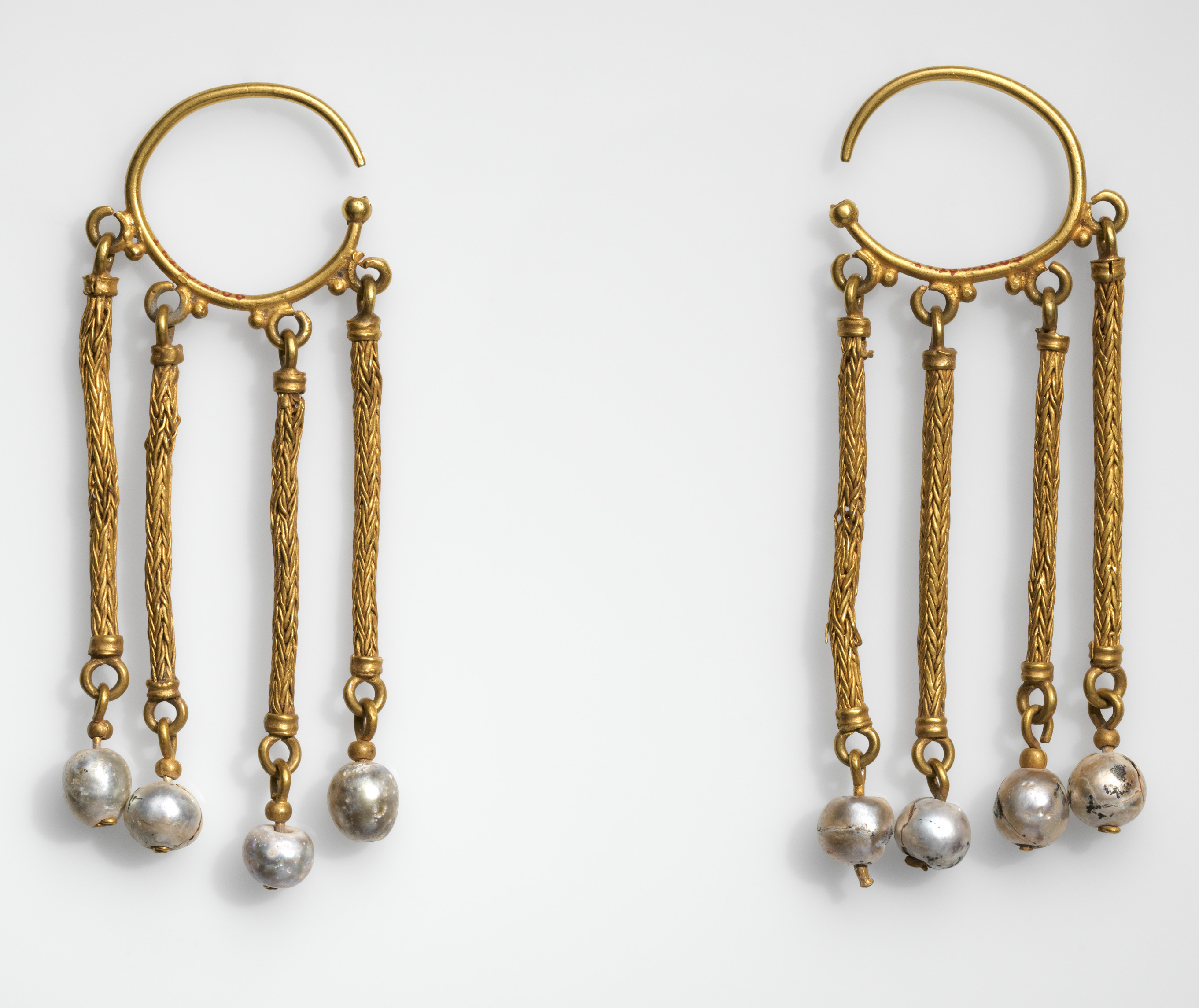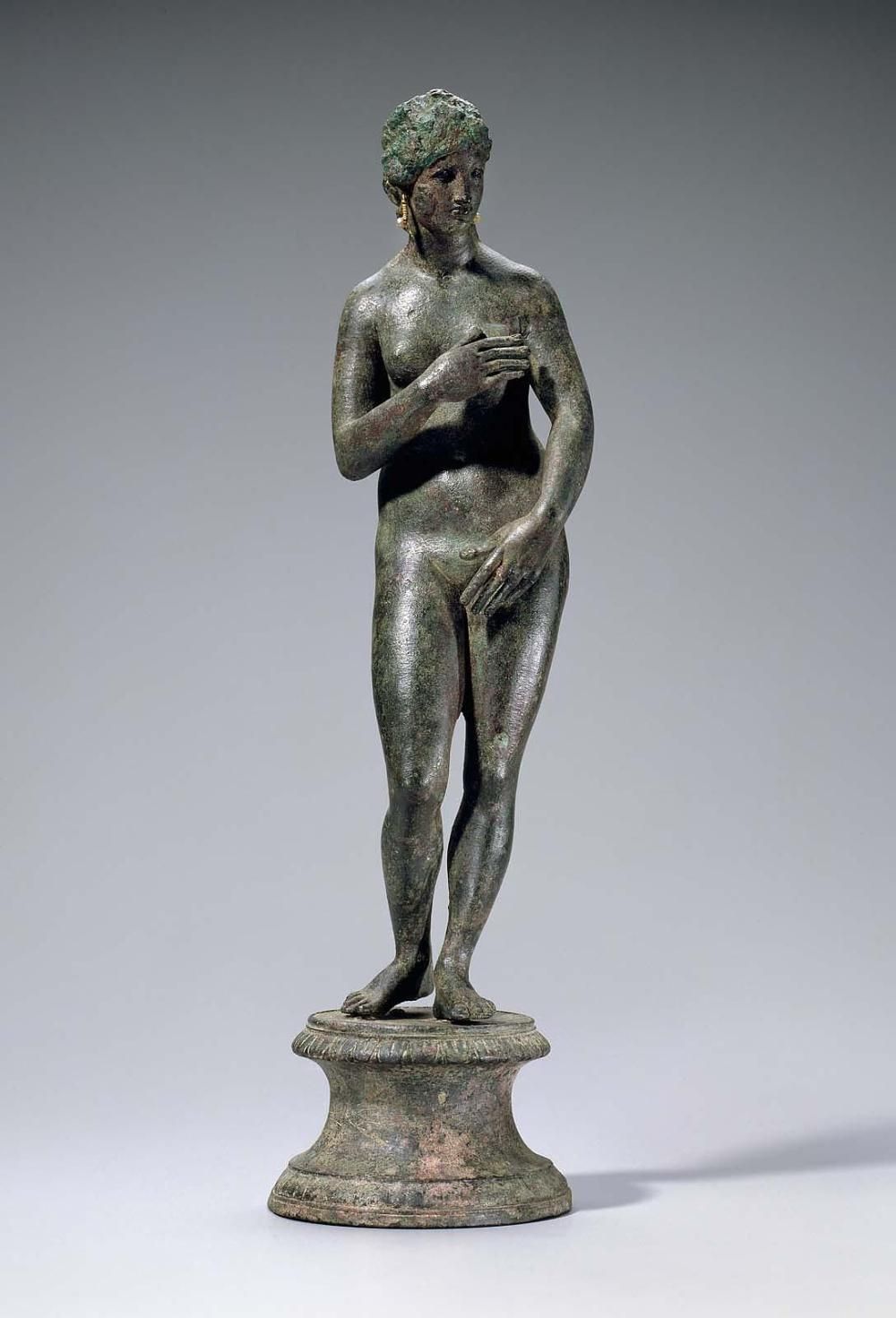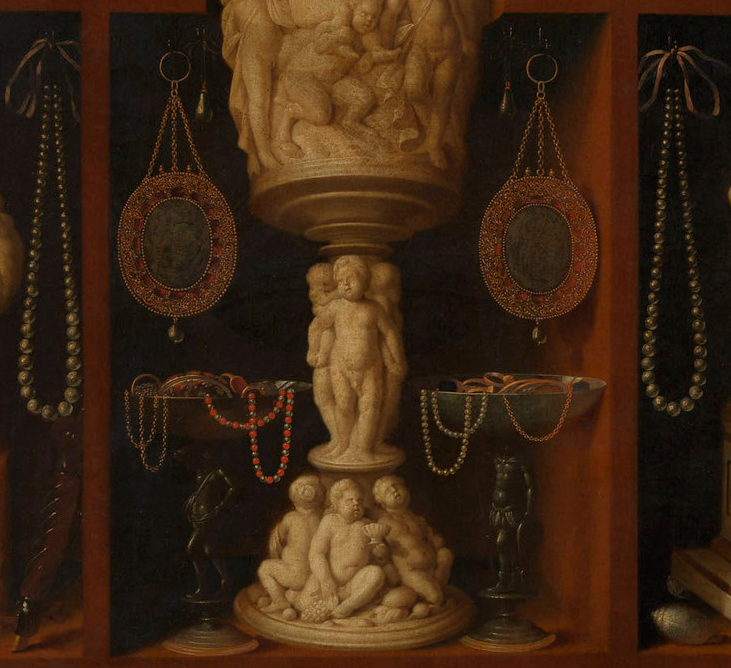Throughout history, ancient cultures across the world wove pearl origin stories that centred around the divine. In ancient China, scholars believed pearls were born from the brains of dragons. In Indian mythology, they were said to form from celestial water droplets, while Middle Eastern philosophers imagined them as the tears of gods. The Byzantines, meanwhile, spoke of pearls as having their own inner light, a miraculous remnant of the lightning bolt believed to have struck the oyster’s shell during creation.

This style, popular in ancient Rome, was known as “crotalia” (from the Greek word for rattle) because the pearls would jingle when worn. Byzantine earrings, gold and pearls, 6th-7th century, Metropolitan Museum of Art

Byzantine bracelet (one of a pair), made in Constantinople, 500-700, Metropolitan Museum of Art
These mythical creation stories endowed pearls with perceived supernatural powers. Early humans prized pearls not for their monetary value, but for their supposed abilities. Pearls were believed to bestow vitality upon the wearer, and they were thought to have a “mood ring” quality — darkening when the wearer was ill and losing their lustre entirely upon the owner’s death.
Even as pearls grew in economic importance, they never lost their mythical aura.
Romans depicted the martial bond between Cupid and Psyche as a strand of pearls whose ends rested in the hands of the god Hymen (the god of marriage ceremonies). Relief plaster depicting Cupid and Psyche by William H. Philip, Smithsonian American Art Museum
 Head of Venus, c. 100, The J. Paul Getty Museum, Malibu, California
Head of Venus, c. 100, The J. Paul Getty Museum, Malibu, California
Roman emperors were fascinated by pearls, often wearing them as symbols of wealth and status. Emperor Caligula, for instance, adorned his shoes with pearls and even placed a pearl necklace on his favorite horse. Pearls held significant importance in Roman pagan religion and were frequently offered to Venus, the goddess of love and beauty, who, according to myth, was born from a shell. When Emperor Alexander Severus was presented with two pearls meant for the Empress, he instead chose to hang them on a statue of Venus. Julius Caesar even passed sumptuary laws prohibiting citizens below a certain rank from wearing pearls.
Pliny the Elder, in his work *Natural History*, remarked, “A pearl worn by a woman is as good as a herald walking in front of her.”
 Detail from The Banquet of Cleopatra, 1653 by Jacob Jordaens. Hermitage Museum, St. Petersburg.
Detail from The Banquet of Cleopatra, 1653 by Jacob Jordaens. Hermitage Museum, St. Petersburg.

Figurine of Capitoline Aphrodite with pearl earrings, Late Hellenistic or Roman Imperial 1st century B.C. or 1st–2nd A.D.Museum of Fine Arts, Boston
One of the most famous ancient stories involving pearls is Cleopatra's wager with Marc Antony. She bet him that she could consume the wealth of an entire nation in just one meal. After an extravagant dinner, Marc Antony believed he had won, as the food was lavish but not worth the value of a country. Cleopatra then requested dessert, and a glass of vinegar was brought to her. She removed a pearl from one of her earrings, dropped it into the vinegar, and drank the dissolved slush. That single pearl was valued at 30 million sesterces (equivalent to more than $14 million today). The remaining pearl was later halved and hung from a statue of Venus in the Pantheon.

Eleonora di Toledo, 16th century. Member of the Spanish royal family during the Pearl Age.
 Detail from Portrait of a Lady in Allegorical Guise by Pierre Mignard, 17th century
Detail from Portrait of a Lady in Allegorical Guise by Pierre Mignard, 17th century
In 1492, King Ferdinand and Queen Isabella of Spain commissioned Christopher Columbus to find a direct route to India, the source of spices, gems, fabrics, and pearls. While Columbus never reached India, during his third voyage to the Americas in 1498, he discovered the pearl fisheries of Central America and returned to Spain with 50 ounces of pearls.
 Portrait of a Lady, probably Camilla Martelli de’Medici
Portrait of a Lady, probably Camilla Martelli de’Medici
by Alessandro Allori, c. 1570. St. Louis Art Museum
 Eleonora (‘Dianora’) di Don Garzia di Toledo di Pietro de’Medici by Alessandro Allori, c. 1571.
Eleonora (‘Dianora’) di Don Garzia di Toledo di Pietro de’Medici by Alessandro Allori, c. 1571.
The discovery and exploitation of pearl-rich fisheries in the New World sparked what historians later termed the Pearl Age.

In this portrait of Queen Elizabeth I, adorned with pearls, even the ermine she holds is draped in pearls. This painting, known as the Ermine Portrait, is attributed to either William Segar or George Gower and was created in 1585.

To quench Europe's growing thirst for pearls, Spanish conquistadors embarked on expeditions to locate rich fisheries. They found them in the islands off the coast of Venezuela, in the Gulf of Panama, and along the shores of Baja California. The exploitation of these fisheries became closely tied to the Spanish colonisation efforts. Indigenous divers were enslaved and forced to dive into treacherous waters, where many met untimely deaths. Shark attacks, haemorrhages, and dysentery claimed the lives of countless divers. To maintain the labour force, the Spanish frequently raided nearby villages to capture more slaves.
 In Tintoretto's 1578 painting, Tarquin and Lucretia, the broken pearl necklace is a poignant symbol, foreshadowing the tragic events to come.
In Tintoretto's 1578 painting, Tarquin and Lucretia, the broken pearl necklace is a poignant symbol, foreshadowing the tragic events to come.


 The pearl earring, topped with a gold cross, was worn by Charles I during his execution in 1649. It is part of the Portland Collection, housed at the Harley Gallery on the Welbeck Estate in Nottinghamshire.
The pearl earring, topped with a gold cross, was worn by Charles I during his execution in 1649. It is part of the Portland Collection, housed at the Harley Gallery on the Welbeck Estate in Nottinghamshire. Charles I, depicted wearing his iconic pearl earring, presided over an authoritarian regime that played a role in the civil war, which eventually led to his execution. The austerity that followed these wars contributed to the decline of the Pearl Age. This particular portrait of Charles I was painted by Anthony van Dyck in 1636.
Charles I, depicted wearing his iconic pearl earring, presided over an authoritarian regime that played a role in the civil war, which eventually led to his execution. The austerity that followed these wars contributed to the decline of the Pearl Age. This particular portrait of Charles I was painted by Anthony van Dyck in 1636.
 The sapphire clasps on the double-strand pearl necklace are believed to be the same diamond and sapphire brooch that Prince Albert gifted to Queen Victoria on their wedding day. This is depicted in the 1845 portrait of Queen Victoria by Franz Xaver Winterhalter.
The sapphire clasps on the double-strand pearl necklace are believed to be the same diamond and sapphire brooch that Prince Albert gifted to Queen Victoria on their wedding day. This is depicted in the 1845 portrait of Queen Victoria by Franz Xaver Winterhalter. In her will, Queen Victoria bequeathed the diamond and pearl brooch to the crown, and both the Queen Motherand Queen Elizabeth II have been photographed wearing it. The piece was painted by Henry Pierce Bone in 1840.
In her will, Queen Victoria bequeathed the diamond and pearl brooch to the crown, and both the Queen Motherand Queen Elizabeth II have been photographed wearing it. The piece was painted by Henry Pierce Bone in 1840.



 First Lady Jacqueline Kennedy is pictured wearing her faux pearls alongside John F. Kennedy Jr. at the White House in 1962, as seen in the John F. Kennedy Library.
First Lady Jacqueline Kennedy is pictured wearing her faux pearls alongside John F. Kennedy Jr. at the White House in 1962, as seen in the John F. Kennedy Library.
